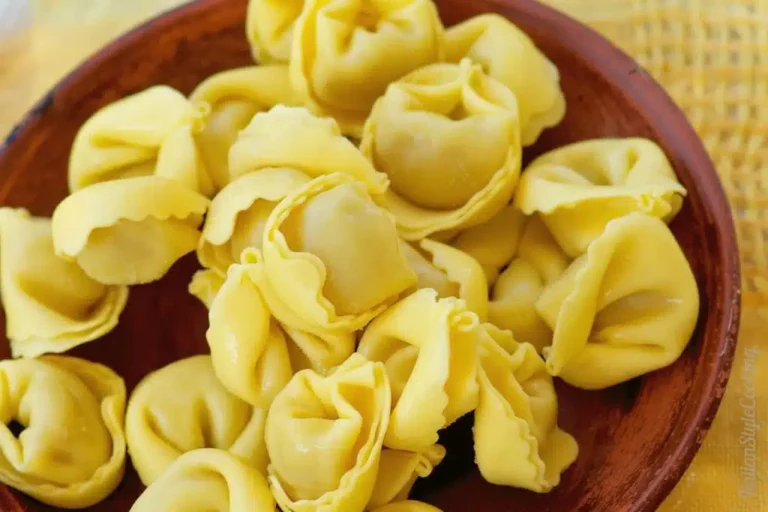
Food additives play a significant role in modern food production, ensuring products are flavorful, appealing, and safe for consumption. Among these additives is E622, a well-known flavor enhancer often associated with monosodium glutamate (MSG). As part of the E-number system, E622 is used widely in processed foods to amplify their natural flavors. Understanding the composition and purpose of E622 is crucial for consumers who are increasingly conscious of the ingredients in their food. This article will explore the uses, safety, and alternatives of E622 while addressing common concerns about its presence in food products.
What Is E622 in Food Additives?
Understanding the E-Number System
The E-number system is a standardized classification for food additives used across Europe and many other parts of the world. These additives, ranging from preservatives to flavor enhancers, are designated with unique identifiers to simplify labeling and improve transparency. E622 falls under this system as a sodium salt of glutamic acid, which enhances the umami flavor in foods. This classification helps manufacturers and consumers identify the function of additives in packaged products.
Chemical Composition of E622
E622, also known as sodium glutamate, is a compound derived from glutamic acid, an amino acid naturally found in many foods such as cheese, tomatoes, and mushrooms. As a synthetic additive, E622 mimics the natural flavor-enhancing properties of glutamate, making it a popular choice in processed foods. Its ability to intensify savory flavors without altering the overall taste profile makes it indispensable in modern food manufacturing.
Why Is E622 Used in Food Products?
Enhancing Flavor Naturally
E622 is widely used in the food industry because of its ability to enhance the umami flavor, one of the five basic taste profiles. By adding depth and complexity to flavors, E622 improves the overall taste of processed foods, soups, sauces, and snacks. This flavor enhancement is particularly beneficial in low-sodium products, as it reduces the need for excessive salt while maintaining a rich taste profile.
Preserving Food Quality
In addition to its flavor-enhancing properties, E622 plays a role in preserving the quality of food products. By stabilizing certain compounds in processed foods, it helps extend their shelf life and maintain texture. This makes E622 a valuable additive in packaged goods, where consistency and longevity are key factors.
Is E622 Safe for Consumption?
Regulatory Standards for Food Additives
The safety of E622 has been assessed by several international organizations, including the FDA (U.S. Food and Drug Administration), the EFSA (European Food Safety Authority), and the Codex Alimentarius Commission. These regulatory bodies classify E622 as “generally recognized as safe” (GRAS) when used within recommended limits. Strict guidelines ensure that food manufacturers adhere to permissible levels, reducing potential risks to consumers.
Potential Health Effects of E622
While E622 is considered safe for the majority of the population, some individuals may experience mild symptoms, such as headaches or flushing, often referred to as the “MSG symptom complex.” These reactions are rare and typically occur only when E622 is consumed in excessive amounts. It is important to note that the scientific community has not established a direct link between E622 and significant health issues.
Where Is E622 Commonly Found?
Processed Foods and Packaged Products
E622 is prevalent in a variety of processed and packaged foods, including:
- Savory snacks such as chips and crackers.
- Ready-to-eat soups and instant noodles.
- Frozen meals and pre-packaged sauces. Its widespread use ensures consistency in flavor and texture across mass-produced food items.
Natural Sources of Glutamate
Although E622 is synthetically produced, glutamate occurs naturally in many foods. For example, aged cheeses, tomatoes, mushrooms, and fermented products like soy sauce are rich in natural glutamates. Understanding the distinction between natural and synthetic sources can help consumers make informed dietary choices.
Exploring Alternatives to E622
Natural Flavor Enhancers
As health-conscious consumers seek alternatives to synthetic additives, natural flavor enhancers are gaining popularity. Ingredients such as yeast extracts, herbs, spices, and umami-rich foods like seaweed and miso provide similar flavor-boosting effects without the need for additives like E622. These alternatives align with the growing demand for clean-label products.
Clean Label Movement and Transparency

The clean label movement emphasizes the use of simple, recognizable ingredients in food products. This trend has led many manufacturers to reduce or eliminate artificial additives, including E622, in favor of more transparent labeling. By adopting cleaner formulations, brands can cater to consumers prioritizing natural and minimally processed foods.
Conclusion
E622 is a widely used food additive that enhances flavor and preserves the quality of processed foods. While it is generally safe for consumption, understanding its role and alternatives can empower consumers to make informed dietary decisions. As the food industry evolves, the shift toward natural ingredients and transparent labeling continues to shape the way additives like E622 are perceived and utilized.
FAQs
What is E622, and how is it classified?
E622 is a sodium salt of glutamic acid used as a flavor enhancer. It is classified under the E-number system as a food additive that enhances the umami taste in foods.
Is E622 the same as MSG?
E622 is a form of monosodium glutamate (MSG). Both serve similar purposes in enhancing savory flavors but may be labeled differently depending on the region and food regulations.
Is E622 harmful to health?
E622 is generally considered safe when used within regulatory limits. However, some individuals may experience mild symptoms such as headaches or flushing if consumed in large amounts.
What foods contain E622?
E622 is commonly found in processed foods like savory snacks, soups, sauces, and frozen meals. It is also present in seasonings and condiments.
Are there natural alternatives to E622?
Yes, natural alternatives include ingredients like herbs, spices, yeast extracts, and umami-rich foods such as mushrooms and tomatoes. These options are ideal for consumers seeking additive-free diets.






